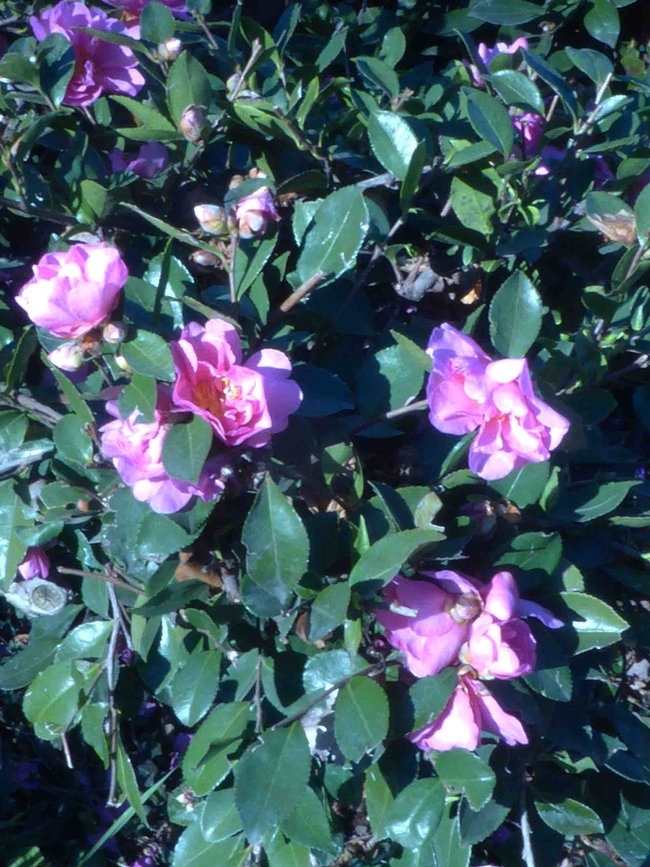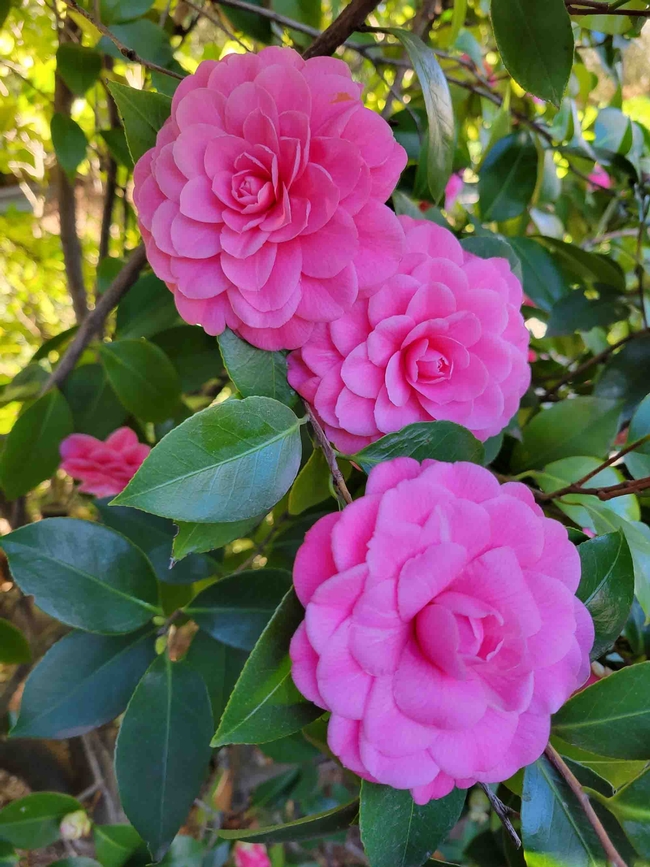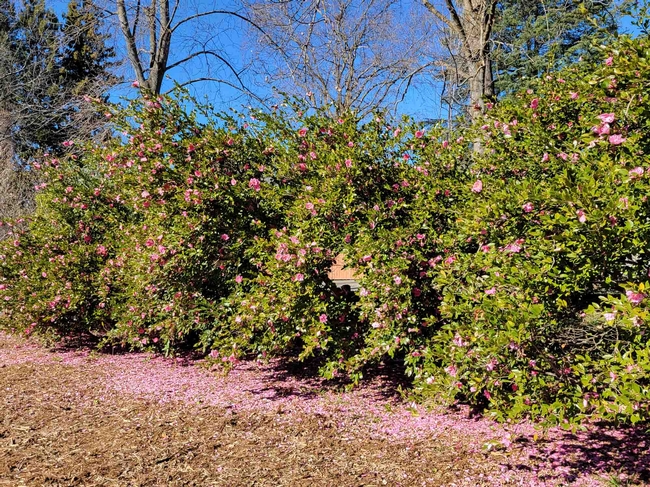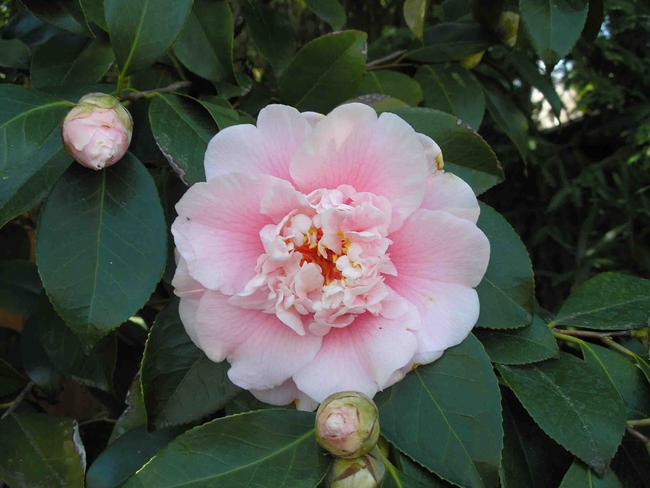Camellias bloom abundantly in our Butte County winters. The sight of their richly-colored blossoms glowing in gray winter light may bring back memories of one's grandmother's house. Certainly the camellia's gift of glorious winter flowers has made this slow-growing evergreen shrub a longstanding favorite in winter gardens, as evidenced by the sheer number of large old camellias seen throughout this region. Originally cultivated in China and Japan, camellias were brought to England with the expansion of the tea trade in the 18th century and were first planted in America in 1797. Pioneering settlers brought camellias west to California in the mid-19th century. In the early 20th century camellias began to be appreciated as woodland shrubs, and this new interest led to the introduction of many new cultivars and hybrids.

Camellia japonica is the “standard bearer” for camellias. It has large, rounded leaves, a tight growth habit, and large flowers in shades of white, red or pink. These blossoms are three to five inches wide. The flowers may be single, semi-double, or double. C. Japonica grows to a height of 25 feet, but is usually kept at six to twelve feet. Different varieties have bloom times ranging from September to April.
Camellia sasanqua has an open growth habit and can be upright and bushy or low and spreading. It has small, narrow, pointed leaves, and small, fragrant, single, white, red, or pink blossoms two to three inches across. It blooms in December. C. Sasanqua's height ranges broadly, from just one foot to over twelve feet high. Although its flowers are smaller than and not as long lasting as those of C. japonica, it blooms profusely and can take more sun.


There are more than 250 species of Camellia, and thousands of camellia cultivars. C. sinensis is an edible garden plant cultivated for both black and green tea made from young leaves and flower buds. Both C. sinensis andC. oleifera, a camellia that produces a fragrant oil, are cold hardy in Butte County.

Enjoy cool winter days glowing with color from the queen of winter flowers, the camellia.
UC Master Gardeners of Butte County are part of the University of California Cooperative Extension (UCCE) system. To learn more about us and our upcoming events, and for help with gardening in our area, visit our website. If you have a gardening question or problem, email the Hotline at mgbutte@ucanr.edu (preferred) or call (530) 538-7201.